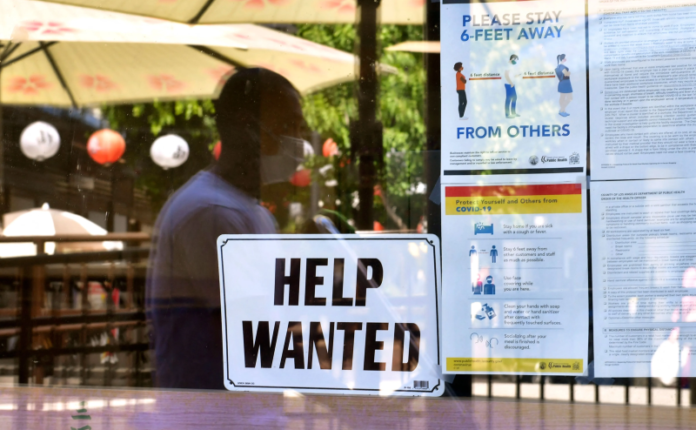Abstract: America’s labor crisis and immigration dilemma might both be addressed by a contentious yet potential solution: expanding legal immigration channels. However, this proposition sparks intense debate in the political arena.
America is grappling with two significant challenges that, at first glance, seem unrelated, yet a single solution might address both. These problems are the escalating labor crisis and the unceasing influx of migrants on the southern border. The proposed solution is politically charged and bound to cause uproar: an expansion of the avenues for legal immigration. This suggestion is rooted in the paradox that America is fighting to keep out migrants eager to work, even as businesses nationwide lament their inability to fill millions of jobs.
The labor market in the United States is in a state of crisis, with nearly ten million job openings unoccupied for the past two years. This significant worker shortage is a driving force behind persistent inflation and escalating interest rates. This scenario starkly contrasts the government’s current policy, which seems intent on keeping people out, despite the dire need for labor.
To bridge this disparity, many experts propose expanding the opportunities for legal immigration. The admission of more immigrants could be a practical solution to invigorate America’s labor force, which has been experiencing slow growth for years. This approach could also alleviate the pressure on the southern border by encouraging migrants to pursue legal avenues of entry into the United States.
However, this proposition is not without its detractors. Conservatives are skeptical of any measures to augment legal immigration, even if it could potentially reduce illegal migration. They argue that rather than admitting more immigrants, the United States should focus on encouraging more native-born adults to join the workforce. This stance remains firmly entrenched despite the extended period of slow growth in the U.S. population, especially among those of working age.
The United States has been experiencing one of its longest periods of sluggish population growth. The most significant impact has been on the youth and working-age population. From 2000 to 2020, the U.S. labor force has only grown by about one-sixth, a considerable slowdown compared to the preceding decades.
The decline in the number of prime-age adults working or seeking work is another alarming trend. The share of working-age adults holding or seeking jobs has been hovering around a little over three-fifths, down from about two-thirds in the late 1980s through 2008. Various theories attempt to explain this decline, but the outcome is evident: a worker shortage that fuels inflation and triggers hikes in interest rates.
Given these circumstances, an increase in legal immigration appears to be the most plausible short-term solution for generating more workers. Studies indicate that immigrants and their children have accounted for a significant 70% of the growth in prime-age workers since 1995. However, the current level of immigration has been insufficient to compensate for the drastic decrease in the number of U.S. workers entering the labor force.
In conclusion, the confluence of labor shortage and immigration issues necessitates a bold solution. Expanding legal immigration might be politically contentious, but it could potentially address these dual crises. However, this requires open dialogue and bipartisan collaboration to strike a balance between economic needs and political realities.
The U.S. is currently facing two significant problems: a shortage of workers and a high rate of illegal immigration. There is a paradox wherein businesses across the nation are having trouble finding enough workers, yet the federal government is attempting to stem the flow of migrants at the Southern border who are looking for work in the U.S. This worker shortfall is causing persistent inflation and higher interest rates.
There’s a growing argument that these problems may share a common solution: expanding legal immigration pathways. Many experts believe admitting more immigrants could help expand America’s labor force, which has seen slow growth for years. More opportunities for legal entry into the U.S. could also reduce pressure at the border by encouraging migrants to pursue legal means of entering the country and seeking work.
The Biden administration is working on the principle that expanding opportunities for legal entry creates leverage for tougher enforcement. If potential migrants believe they have a realistic chance to legally enter and work in the U.S., they are less likely to be deterred by penalties for illegal entry. However, conservatives remain skeptical of increasing legal immigration, even if it could potentially reduce illegal immigration.
The U.S. is currently experiencing one of its longest periods of slow population growth. The labor force has been growing at a slower rate, especially since 2020. These trends are not expected to provide home-grown relief to the labor shortage. The number of children under 18 in the U.S. declined by about 1 million from 2010 to 2020, and this decline is likely to result in a continued squeeze on the workforce.
The proportion of prime-age workers actively participating in the job market has stagnated. The share of working-age adults holding or seeking jobs has been stuck at just over three-fifths, down from about two-thirds from the late 1980s through 2008. The economy is becoming increasingly dependent on older workers, but this trend is likely unsustainable in the long term, especially since many jobs require manual labor that older workers may not be able to perform.
There’s no agreed-upon explanation for the decline in the number of prime-age adults working or seeking work. Theories range from the opioid epidemic to low wages, to excessive social benefits making it too easy not to work. Regardless of the cause, the worker shortfall has been cited by the Federal Reserve Board as one reason for stubborn inflation, and their response has been to repeatedly raise interest rates.
Increasing immigration might be a plausible way to generate more workers in the near term. A study conducted by the Cato Institute found that immigrants and their children have accounted for 70% of the growth in prime-age workers since 1995.









